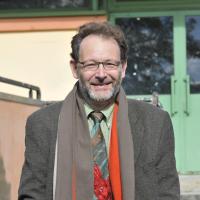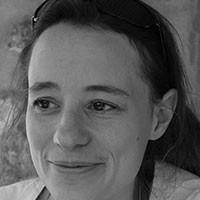Light-matter interactions for basic science and applications
Mixing basic science and applications is a key point of our research practice. This can be done in particular through strong and long-standing links with the physics group at Thales Research and Technology. The exchanges of know-how and perspectives brought by our different themes have allowed us to adopt original points of view in activities which range from very fundamental studies linked to the field atom-laser interactions to the development of optoelectronic oscillators of high spectral purity, through the physics of lasers.
Coherent processes in atom cells
After several years of work on coherent processes in metastable helium, such as electromagnetically induced transparency (EIT), coherent population trapping (CPO) or four wave mixing (FWM), and generation of squeezed states of light, our collaborations in India and with Thales made us give new orientations to this topic:
i) basic science with spin noise spectroscopy in thin cells, in order to probe the interaction of a spin ensemble with its environment, and ii) possible applications of EIT with Rydberg atom based radiofrequency field sensing.
Laser physics:
Besides, the collaboration with Thales has led us to propose new types of mode-locked nanolasers based on unconventional cavities sustaining oscillation of longitudinal Hermite-Gaussian modes. Such lasers could have applications for tunable optical clock generation. Besides, we are buiding degenerate cavity VECSELs sustaining generation of arrays of lasers coupled through diffraction, for studies of dynamics and noise of coupled oscillators, with potential applications to the generation of optical vortices and analog simulations.
Low noise sources:
Collaboration with C2N allows us to design very low noise VECSELs (Vertical Extended Cavity Surface Emitting Lasers) that can operate in single- or dual-frequency regimes. In addition to the fundamental interest of this research, the creation of dual-mode ultra-stable local oscillators is of particular interest to Thales Research and Technology for radar applications (at 1 mm and 1.5 mm), as well as to our colleagues at SYRTE for use in atomic clocks (at 800 nm).
Optical and quantum sensors:
In collaboration with Thales, we are developing new generations of passive resonant gyroscopes, based either on hollow-core fibers or on bulk passive resonators. We are also developing sub-shot noise sensors using entangled beams of light generated by phase sensitive amplifiers.
A FEW PROJECTS:
- AID Project CARDAMONE - EU Project ADEQUADE
A FEW REFERENCES:
- Y. Sun et al. Physical Review A 102, 043503 (2020). - Y. Bouasria et al.,IOP J. Opt. 23, 035201 (2021). - P. Neveu et al., Opt. Expr. 29, 10471 (2021). - M. Descampeaux et al., Opt. Expr. 29, 36211 (2021). - S. Liu et al., New J. Phys. 24, 113047 (2022). - J. Delpy et al., Physd. Rev. A 107, L011701 (2023). - S. Karuseichyk et al., Opt. Expr. 31, 41713 (2023). - G. Feugnet, M. Descampeaux, and F. Bretenaker, “Method for servocontrolling an optical device comprising a laser and a cavity, making it possible to compensate for an amplitude modulation introduced by a phase modulator,” FR20210003389, WO2022EP58753, Thales/ENS Paris-Saclay Patent (2021).
Current members:
- Permanent staff:
- Fabien Bretenaker (CNRS senior researcher)
- Nikos Fayard (ENS Paris-Saclay assistant professor)
- Fabienne Goldfarb (University Paris-Saclay professor)
- Non-permanent staff :
- Mickaël Branco (PhD student)
- Joseph Delpy (PhD student)
- Adwaith Kalluvayal-Varooli (post-doc researcher)
- Sonya Karuseichy (PhD student)
- Duc-Anh Trinh (PhD student)




